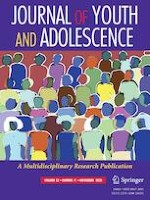17-07-2023 | Empirical Research
Profiles, Transitions, and Resilience Factors of Suicide Risk in Early Chinese Adolescents
Gepubliceerd in: Journal of Youth and Adolescence | Uitgave 11/2023
Log in om toegang te krijgenAbstract
As a severe public health concern directly endangering life safety, adolescent suicide has been extensively investigated in variable-centered studies. However, gaps remain in the knowledge of heterogeneous suicide risk patterns and their developmental nature. Additionally, little is known about protective factors associated with suicide risk patterns and changes. This study applied person-centered approaches to explore suicide risk profiles and transitions over time in early Chinese adolescents, along with their protective factors. A total of 1518 junior high school students (49.6% girls, Mage = 13.57, SD = 0.75) participated in two surveys within a 12-month interval. Latent Profile Analysis and Latent Transition Analysis were used to model the profiles and transitions of suicide risk. Three risk profiles were identified at both time points: low risk profile (73.9, 78.3%), medium risk-high threat profile (16.2, 10.2%), and high risk profile (9.9, 10.2%). Low risk profile was stable, while medium risk-high threat and high risk profiles showed great transitions over 12 months. Sense of control, meaning in life, and regulatory emotional self-efficacy served as protective factors against suicide risk profiles and transitions. Findings underscore the importance of comprehensively illustrating suicide risk states from multiple aspects, as well as understanding the fluid nature of transitions between different risk states. Prevention and intervention strategies aimed at enhancing resilience, such as increasing sense of control, perceived meaningfulness, and belief in emotional regulation, may contribute to reducing the risk of suicide among adolescents.
